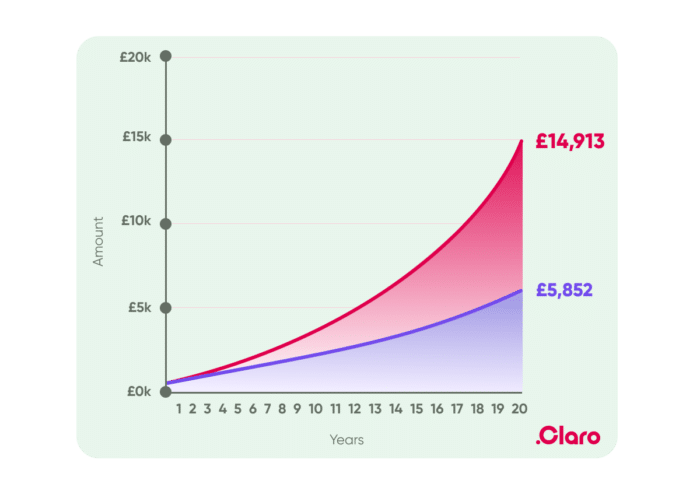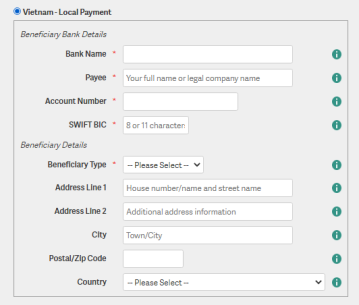
When buying stocks, you should pay attention to some important factors. These are the Dividend yield and price-to earnings (PE) ratios. If you're able to find the right criteria, buying stocks for the long-term is a great option.
Dividend yield
Consider the dividend yield when buying stocks. This measure shows the change in stock price relative to the dividends received by a company during a given year. This information can be used to compare stocks and help you decide which stocks are most profitable for your portfolio.

Ratio of price to earnings (PE)
Commonly, the price-to-earnings ratio (P/E), is used to determine a company’s value. This is calculated by the company's earnings divided with the number of outstanding shares. For example, a company earning $100 million per annum and having 50,000 shares outstanding would have an EPS value of $2. If the P/E for this company is 20 it means that a $20 purchase in this stock will yield 1
Ratio debt-to equity
When buying stocks, it is important to understand the debt-to-equity ratio. This ratio shows you how much debt a company has for every dollar of equity. It is a key indicator of a company's risk. This ratio is one of several metrics known as leverage ratios. They show how much debt a company has. Higher debt-to-equity ratios usually indicate that a business is using more debt than it has equity. Investors are less likely to be concerned if a company has a low debt ratio.
Corporate growth
A great way to make income is to invest in companies that are experiencing rapid growth. Stocks that are growing rapidly tend to have higher PE ratios than average stocks, and therefore they are less risky than stocks that have not yet begun making money. These growth stock also have strong brand recognition, which attracts loyal clients and provides consistent innovation.

Dividends
Dividends are an important factor to consider when investing in stocks. The stability of a stock will depend on how it can maintain its payouts and how much cash it has. The stability of a dividend is determined by growing earnings, lack or debt, and firm exclusivity. These factors will allow you to buy and sell stock easily. Dividend stocks that provide stable income and capital growth will be the best.
FAQ
Should I buy mutual funds or individual stocks?
You can diversify your portfolio by using mutual funds.
They may not be suitable for everyone.
You should avoid investing in these investments if you don’t want to lose money quickly.
Instead, you should choose individual stocks.
You have more control over your investments with individual stocks.
Additionally, it is possible to find low-cost online index funds. These funds let you track different markets and don't require high fees.
What type of investment is most likely to yield the highest returns?
It is not as simple as you think. It all depends upon how much risk your willing to take. For example, if you invest $1000 today and expect a 10% annual rate of return, then you would have $1100 after one year. If instead, you invested $100,000 today with a very high risk return rate and received $200,000 five years later.
The higher the return, usually speaking, the greater is the risk.
So, it is safer to invest in low risk investments such as bank accounts or CDs.
However, the returns will be lower.
Investments that are high-risk can bring you large returns.
A 100% return could be possible if you invest all your savings in stocks. However, it also means losing everything if the stock market crashes.
Which one do you prefer?
It all depends upon your goals.
It makes sense, for example, to save money for retirement if you expect to retire in 30 year's time.
But if you're looking to build wealth over time, it might make more sense to invest in high-risk investments because they can help you reach your long-term goals faster.
Remember: Riskier investments usually mean greater potential rewards.
There is no guarantee that you will achieve those rewards.
What investments should a beginner invest in?
Investors new to investing should begin by investing in themselves. They should learn how to manage money properly. Learn how to save for retirement. Learn how to budget. Learn how you can research stocks. Learn how you can read financial statements. Learn how to avoid falling for scams. You will learn how to make smart decisions. Learn how you can diversify. Protect yourself from inflation. Learn how you can live within your means. How to make wise investments. You can have fun doing this. You will be amazed by what you can accomplish if you are in control of your finances.
How do I wisely invest?
It is important to have an investment plan. It is important to know what you are investing for and how much money you need to make back on your investments.
Also, consider the risks and time frame you have to reach your goals.
This will allow you to decide if an investment is right for your needs.
You should not change your investment strategy once you have made a decision.
It is better not to invest anything you cannot afford.
Statistics
- 0.25% management fee $0 $500 Free career counseling plus loan discounts with a qualifying deposit Up to 1 year of free management with a qualifying deposit Get a $50 customer bonus when you fund your first taxable Investment Account (nerdwallet.com)
- As a general rule of thumb, you want to aim to invest a total of 10% to 15% of your income each year for retirement — your employer match counts toward that goal. (nerdwallet.com)
- If your stock drops 10% below its purchase price, you have the opportunity to sell that stock to someone else and still retain 90% of your risk capital. (investopedia.com)
- Some traders typically risk 2-5% of their capital based on any particular trade. (investopedia.com)
External Links
How To
How to properly save money for retirement
Retirement planning involves planning your finances in order to be able to live comfortably after the end of your working life. It is the time you plan how much money to save up for retirement (usually 65). It is also important to consider how much you will spend on retirement. This includes hobbies, travel, and health care costs.
You don't need to do everything. Many financial experts are available to help you choose the right savings strategy. They'll examine your current situation and goals as well as any unique circumstances that could impact your ability to reach your goals.
There are two main types, traditional and Roth, of retirement plans. Roth plans can be set aside after-tax dollars. Traditional retirement plans are pre-tax. You can choose to pay higher taxes now or lower later.
Traditional Retirement Plans
A traditional IRA lets you contribute pretax income to the plan. Contributions can be made until you turn 59 1/2 if you are under 50. After that, you must start withdrawing funds if you want to keep contributing. Once you turn 70 1/2, you can no longer contribute to the account.
A pension is possible for those who have already saved. The pensions you receive will vary depending on where your work is. Matching programs are offered by some employers that match employee contributions dollar to dollar. Others provide defined benefit plans that guarantee a certain amount of monthly payments.
Roth Retirement Plans
Roth IRAs are tax-free. You pay taxes before you put money in the account. Once you reach retirement, you can then withdraw your earnings tax-free. There are however some restrictions. There are some limitations. You can't withdraw money for medical expenses.
A 401 (k) plan is another type of retirement program. These benefits are often offered by employers through payroll deductions. Employer match programs are another benefit that employees often receive.
401(k) Plans
Most employers offer 401k plan options. They allow you to put money into an account managed and maintained by your company. Your employer will automatically pay a percentage from each paycheck.
You decide how the money is distributed after retirement. The money will grow over time. Many people take all of their money at once. Others distribute their balances over the course of their lives.
Other types of savings accounts
Other types of savings accounts are offered by some companies. At TD Ameritrade, you can open a ShareBuilder Account. You can also invest in ETFs, mutual fund, stocks, and other assets with this account. You can also earn interest for all balances.
Ally Bank offers a MySavings Account. You can deposit cash and checks as well as debit cards, credit cards and bank cards through this account. You can also transfer money from one account to another or add funds from outside.
What next?
Once you have decided which savings plan is best for you, you can start investing. Find a reliable investment firm first. Ask family and friends about their experiences with the firms they recommend. Online reviews can provide information about companies.
Next, decide how much to save. This is the step that determines your net worth. Net worth refers to assets such as your house, investments, and retirement funds. Net worth also includes liabilities such as loans owed to lenders.
Once you know how much money you have, divide that number by 25. This number is the amount of money you will need to save each month in order to reach your goal.
For example, if your total net worth is $100,000 and you want to retire when you're 65, you'll need to save $4,000 annually.